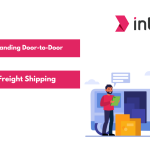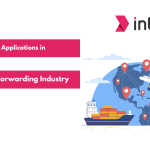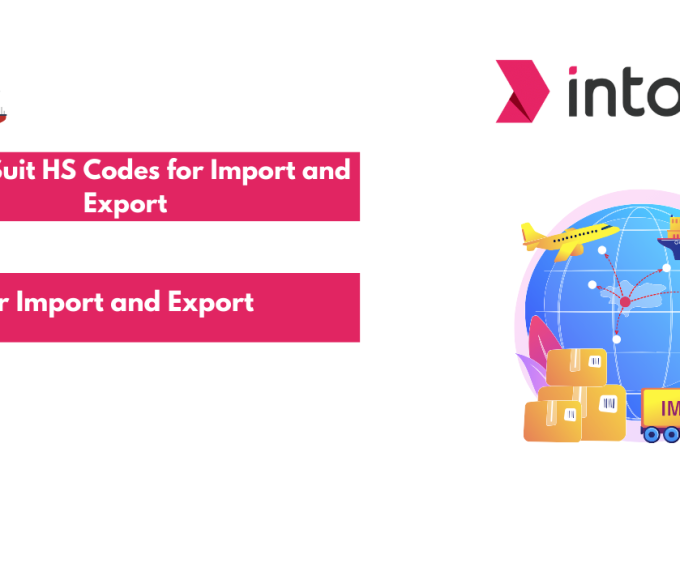Exporters shipping goods from India to the USA often encounter confusion when it comes to freight charges and forwarding charges. While freight charges cover the actual transportation of goods, forwarding charges include the administrative and logistical services needed to move shipments efficiently. These costs can significantly influence pricing, profit margins, and the overall competitiveness of Indian exporters in the US market.
Understanding the differences between these charges allows exporters to plan better, avoid hidden costs, and make informed decisions. In the article, readers will explore clear definitions, practical examples, and actionable tips to help streamline export logistics and strengthen their business strategies.
TL;DR
- Freight charges cover the physical transportation of goods (e.g., ocean freight, fuel surcharge, port fees).
- Forwarding charges include services like documentation, customs clearance, inland transport, and coordination.
- Key invoice terms include Ocean Freight, Forwarding Fee, CAF, ISPS Fee, and Customs Brokerage.
- Costs vary based on shipping mode, route distance, cargo size, and seasonal demand.
- Exporters can cut costs by consolidating shipments, negotiating rates, and planning ahead.
What are Freight Charges?
Freight charges are the costs associated with the transportation of goods from the exporter’s location to the destination port. These charges are a critical component of the total cost of exporting and can vary depending on factors like shipping mode, distance, and weight.
The key components typically included in freight charges are:
- Base Transportation Cost: The main fee for moving goods, calculated by weight, volume, and distance.
- Fuel Surcharges: Adjustments for fuel price fluctuations, often listed as Bunker Adjustment Factor (BAF) for sea freight.
- Handling Charges: Fees for loading, unloading, and processing cargo at ports or terminals.
- Customs Duties and Taxes: Expenses for clearing goods through customs, varying by shipment and destination.
- Documentation Fees: Charges for preparing shipping documents such as the bill of lading and export declarations.
- Special Surcharges: Additional costs like congestion surcharges, peak season surcharges, hazardous goods surcharges, or charges for oversized cargo.
- Security Fees: Charges for security screening and compliance with international shipping regulations.
- Port Charges: Fees imposed by ports for using their facilities and infrastructure.
- Container Imbalance Charges: Costs incurred when containers need to be repositioned due to trade imbalances between regions.
On export invoices, these charges typically appear as separate line items, such as “Ocean Freight,” “Fuel Surcharge,” “Terminal Handling Charges,” “Shipping Insurance,” and “Customs Duties”, allowing exporters to see a clear breakdown of each cost and manage shipping budgets effectively.
Looking to optimize shipping costs with clear freight and forwarding charges? Contact Intoglo today!
Suggested Read: Understanding Inland Container Depot (ICD) Charges and Services
What are Forwarding Charges?
Forwarding charges cover the services provided by freight forwarders to manage and coordinate shipments from India to the USA. These charges go beyond transportation, focusing on the administrative, compliance, and logistical support needed for a smooth export process.
Common components include:
- Customs Clearance Fees: Charges for handling customs documentation and formalities.
- Booking Fees: Costs for reserving shipping space and managing schedules.
- Warehouse Handling: Fees for storage, consolidation, or deconsolidation at warehouses.
- Inland Transportation: Charges for moving goods between the exporter’s premises and the port or airport.
- Cargo Tracking and Communication: Fees for shipment monitoring and status updates.
- Consultation and Compliance: Charges for regulatory advice, permits, and trade documentation.
- Administrative Fees: General service charges for managing the forwarding process.
- Currency Adjustment Factor (CAF): A surcharge to offset currency exchange rate fluctuations, which can significantly impact shipping costs on international routes.
- Fumigation Fee: Costs for treating cargo to meet quarantine and safety regulations, often required for shipments containing wood or agricultural products.
- Shipping Insurance: Protection against loss, damage, or theft during transit; this is often included in the freight charge breakdown and ensures financial coverage for the shipment.
- ISPS Fees: Charges related to the International Ship and Port Facility Security (ISPS) Code, covering enhanced security measures at ports.
On export invoices, forwarding charges often appear as line items such as “Forwarding Fee,” “Customs Brokerage,” “CAF Surcharge,” “Fumigation Fee,” “ISPS Fee,” and “Inland Haulage.” Understanding these charges helps exporters budget accurately and avoid unexpected costs in their international shipments.
Struggling with manual freight processes and inefficiencies?
Get personalized quotes now!Now that we’ve covered what each charge means, it’s time to understand the variables that affect these costs and why two similar shipments can have very different pricing.
Suggested Read: What are the Duties and Responsibilities of a Freight Forwarder
Factors Influencing the Difference in Costs
The cost of freight charges can vary significantly depending on a range of factors. Understanding these variables can help exporters manage their shipping expenses and make more informed decisions. Here are the key elements that influence the variation in freight costs:
- Shipping Mode (Air, Sea, Rail, or Road): The mode of transport plays a major role in the cost of freight. Air freight, while faster, tends to be more expensive compared to sea freight, which, though slower, is generally more cost-effective for large or heavy shipments.
- Distance and Route: The distance between the origin and destination, as well as the shipping route chosen, will affect the cost. Longer distances or more complex routes with additional transshipments can increase shipping charges.
- Cargo Volume and Weight: Freight costs are heavily influenced by the size and weight of the shipment. Larger and heavier shipments require more space and resources, thereby raising costs. Volume-based pricing (cubic meters or container space) is often used for large shipments.
- Fuel Prices: Fluctuations in fuel prices directly impact freight costs. Shipping companies adjust their rates periodically to reflect changes in fuel prices, and this surcharge is often passed onto exporters.
- Seasonality and Demand: Shipping rates can fluctuate based on seasonal demand. During peak seasons (e.g., holiday shopping periods), rates may rise due to higher demand for space on ships or planes.
- Port and Terminal Fees: Different ports charge varying fees for handling, docking, and storing goods. Major international ports with more extensive facilities may have higher port charges compared to smaller, less congested ones.
- Insurance Coverage: The level of insurance coverage chosen for a shipment can affect the overall freight cost. Higher coverage for riskier cargo can lead to increased premiums.
By understanding these factors, exporters can better predict potential fluctuations in their shipping costs and plan their logistics more effectively.
To give you a clearer picture, let’s compare freight and forwarding charges side-by-side so you can see how they differ in purpose, billing, and responsibility.
Key Differences Between Freight and Forwarding Charges
Freight and forwarding charges are often confused, but they cover different aspects of the shipping process. While freight charges are directly related to the transport of goods, forwarding charges encompass a broader range of services that ensure the smooth flow of the shipment from origin to destination.
Here’s a clear comparison of the two:
| Aspect | Freight Charges | Forwarding Charges |
| Definition | The cost of transporting goods from one point to another. | Costs for additional services, including documentation, customs clearance, and coordination. |
| Coverage | Only includes the physical transportation (ship, air, rail, road). | Includes logistics management, paperwork, and coordination of multiple carriers. |
| Typical Components | Base rate, fuel surcharge, port fees, container handling, and shipping insurance. | Documentation fees, customs clearance, warehousing, and unloading charges. |
| Purpose | To cover the direct costs of getting goods from point A to point B. | To cover the services that ensure goods meet legal and regulatory requirements at both ends of the shipment. |
| Billing on Invoices | Listed as “Freight” or “Shipping.” | Listed under “Forwarding Charges” or similar headings, detailing each service separately. |
| Responsibility | Paid by the exporter or importer, depending on the terms of the contract (e.g., FOB, CIF). | Typically paid by the importer, though this can vary depending on shipping terms (e.g., DDP, EXW). |
Compare all associated costs and streamline your shipping process.
Request a quote now!With the differences and influencing factors in mind, let’s look at some actionable tips you can apply to minimize shipping costs and boost profitability.
Tips for Reducing Freight Charges and Fees
Exporters can take several practical steps to keep freight charges and related fees under control when shipping from India to the USA. Careful planning and informed choices not only help reduce costs but also minimize risks and delays.
- Plan Shipments in Advance: Last-minute bookings often attract premium rates. Scheduling shipments ahead of time allows access to more economical options and better negotiation with carriers.
- Optimize Packaging: Use appropriately sized, sturdy packaging to reduce dimensional weight and avoid unnecessary surcharges. Avoid oversized or under-filled boxes that increase shipping costs.
- Consolidate Shipments: Combine multiple orders into a single shipment to benefit from bulk rates and save on per-shipment fees.
- Compare Multiple Carriers: Use digital logistics platforms to compare rates and services from different shipping lines and freight forwarders, ensuring the best value for your needs.
- Negotiate Rates: For regular or high-volume shipments, negotiate directly with carriers or leverage your forwarder’s buying power for better rates.
- Understand Incoterms: Clearly define responsibilities and costs with buyers to prevent unexpected expenses and disputes.
- Stay Updated on Regulations: Monitor customs, packaging, and documentation requirements to avoid fines, delays, and additional handling fees.
- Choose Alternative Ports: Sometimes, using a different port of entry or exit can lower overall shipping expenses.
- Work with Reliable Partners: Select experienced freight forwarders and customs brokers who can guide you through cost-saving strategies and compliance issues.
By following these tips, exporters can optimize their shipping budgets and enhance their competitiveness in the US market.
CTA: Planning ahead and consolidating shipments to reduce costs?
Planning ahead and consolidating shipments to reduce costs?
Contact for expert advice!As you evaluate freight partners, you might wonder what it actually costs to work with a freight forwarder. This section breaks down what to expect and how value is determined.
Suggested Read: Understanding Sea Freight Import & Shipping Process
How Much Does a Freight Forwarder Cost?
The cost of a freight forwarder varies depending on several factors, including the scope of services provided, the destination of the shipment, and the volume of goods being transported. Typically, freight forwarders help manage various aspects of the shipping process, such as customs documentation, arranging transportation, negotiating with carriers, and ensuring goods reach their final destination smoothly.
Some key considerations that can influence the cost include:
- Destination and Shipping Mode: Whether you’re shipping by air, sea, or land, the mode and destination can impact the complexity and cost of the services offered.
- Volume and Frequency: Large, frequent shipments may attract discounts, while smaller or one-time shipments could cost more per unit of cargo.
- Services Included: Freight forwarders can offer a range of services from simple transportation to more comprehensive offerings, like customs clearance, warehousing, or inventory management. The more services included, the higher the overall cost.
It’s important to note that the cost of working with a freight forwarder often reflects the value they provide in ensuring the efficiency and reliability of the shipping process. With the right partner, the cost can be a worthwhile investment that streamlines logistics and saves you time and money in the long run.
To get an accurate and detailed cost estimate, you can rely on Intolgo for its transparent quotation. Intolgo provides a clear cost breakup, along with straightforward terms and conditions, ensuring you understand exactly what you’re paying for.
Take the first step toward hassle-free FCL shipping from India to the USA.
Get an instant quote today!Conclusion
Understanding the differences between freight and forwarding charges is crucial for Indian exporters looking to optimize shipping costs and streamline their logistics to the USA. By knowing what each charge covers and how they appear on invoices, exporters can make informed decisions, negotiate better rates, and avoid unexpected expenses.
For businesses seeking a reliable partner to simplify every aspect of international shipping, Intoglo offers a comprehensive, transparent, and technology-driven solution.
Why choose Intoglo for your India-USA shipments?
- Seamless door-to-door FCL shipments, including origin pickup, customs clearance, ocean freight, and last-mile delivery.
- PAN India pickups within 24 hours and dedicated CFS space at major ports.
- Direct contracts with major shipping lines and special contract rates.
- Hassle-free customs clearance and expert customs brokers.
- End-to-end tracking, real-time WhatsApp updates, and transparent quotations with detailed cost breakup.
- AI-powered HS Scanner tool which allows exporters to get US-specific HS code in 2 clicks by just uploading their product’s images.
- Extensive warehousing, trucking, and drayage network across the USA.
- Seamless integration with Amazon FBA for global reach.
With Intoglo, exporters enjoy clarity, efficiency, and tailored solutions for every shipping need.
Get in touch with our FCL shipping experts
FAQs
1. What is the main difference between freight charges and forwarding charges?
Freight charges cover the physical transportation of goods (by sea, air, or land), while forwarding charges include administrative, documentation, and logistics services that manage and coordinate the shipment from start to finish.
2. Can I negotiate freight and forwarding charges with my service providers?
Yes, especially for regular or high-volume shipments. Comparing multiple carriers and forwarders, consolidating shipments, and understanding your shipment’s specifics can help you negotiate better rates.
3. Is it necessary to use a freight forwarder for shipping from India to the USA?
While not mandatory, freight forwarders simplify the shipping process by handling documentation, customs, compliance, and logistics coordination, making international shipping more efficient and reducing the risk of costly errors.
4. How do freight and forwarding charges appear on export invoices?
Freight charges typically show up as line items like “Ocean Freight” or “Air Freight,” whereas forwarding charges are listed as “Forwarding Fee,” “Customs Brokerage,” “CAF Surcharge,” or similar service-related fees.
5. How can I ensure transparency in freight and forwarding charges when exporting to the USA?
Request a detailed cost breakup from your service provider and clarify all inclusions and exclusions before booking. Transparent quotations help avoid hidden fees and make it easier to compare offers from different forwarders.









Leave a comment